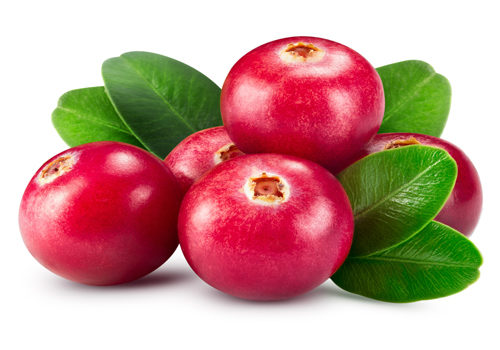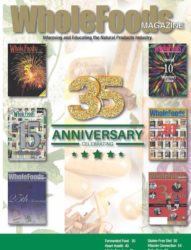You’re at the grocery store and remember you need cleaning products. You’re drawn to the earth-toned bottles. Must be environmentally friendly, right? But, two discrete, yet alarming statements on the bottle of stain remover catch your eye. “May be fatal or cause permanent damage” and “Will penetrate skin and attack underlying tissues and bone.” Are you sure you still want to use that?
Many products are great at masquerading as natural cleaners. Here are some tips for identifying truly green products and how they’ll keep your home sparkling clean.
Ten Chemicals To Avoid
Most synthetic cleaners contain chemicals and ingredients that pose risks and dangers to those who use them. About 17,000 petrochemicals are commonly used in homes, 70% of which haven’t been tested for exposure to human health and the environment (1). Chemicals and fumes linger in the air and on surfaces, even several days after use. It’s no wonder why indoor air pollution can be up to 100 times higher than outdoor air pollution levels after some activities, according to estimates from the U.S. Environmental Protection Agency (1).
Evidence links the frequent use of ordinary cleaning supplies at home or work with the development of asthma and other respiratory problems (2). In more serious cases, children born to women who worked in the cleaning industry while pregnant have an elevated risk of birth defects (2). Studies suggest that there is a relationship between the use of cleaning supplies containing carcinogens and the development of cancer (2).
So, what chemicals and ingredients should you avoid?
1. Boric acid: Released during the bleaching process in detergents, boric acid is toxic to the reproductive system (2).
2. 2-butoyethanol: Usually used in spray cleaners, this solvent is easily inhaled, damages red blood cells and can contribute to severe liver and kidney damage.
3. Phosphates: Used in dish and laundry detergents, phosphates can cause nausea and skin irritation. What is so dangerous is that they are still active after waste and water treatment. Most U.S. states have now banned phosphates from detergents (2).
4. “-monium chloride”: Found in antimicrobial agents, this preservative can cause eye, lung and skin irritation (3).
5. Formaldehyde: A known carcinogen, formaldehyde can be found in a variety of cleaning products (3).
6. Phthalates: Found in fragranced household products, they can disrupt hormone levels (4).
7. Triclosan: This ingredient, found in “antibacterial” products, can promote drug-resistant bacteria, meaning that microbes develop resistance to antibiotics we need. It also is a hormone disruptor in animals (5).
8. Ammonia: Found in polishing agents and glass cleaners, ammonia can cause respiratory problems. Also, forms a poisonous gas when mixed with bleach (2).
9. Sodium hydroxide: Used in drain openers and oven cleaners, this chemical is extremely corrosive and can cause burning (6).
10. 1,4 Dioxane: This carcinogen is found in many personal care products and can cause skin, eye and lung irritation (2).
Natural Options
Here are some natural cleaning products that won’t break the bank.
Dish soap. Many natural dish soaps are tough on grease, gentle on hands and leave no residue. Some contain plant-derived surfactants such as coconut oil-derived sodium lauryl sulfate, decyl glucoside and lauryl polyglucose to help remove grease and grime from surfaces (7).
Laundry detergent. Free of optical brighteners, dyes, synthetic fragrances and phosphates, natural laundry detergents contain plant-derived cleaning surfactants such as laureth-6, myristyl glucoside or sodium lauryl sulfate to attack all stains (8).
Bathroom cleaners. Natural bathroom cleaners are void of phosphates and chlorine. Instead, they may contain odorless plant-based enzymes, which are key to cutting cleaning time and leaving the bathroom sparkling (9).
Multi-surface cleaners. Effective at penetrating dirt, grease, oil, grime and smudges, these cleaners are often biodegradable and pH balanced. Products may contain corn, coconut or palm oil-derived surfactants and essential oils that leave the house smelling fresh (10)!
Floor cleaners. Natural floor cleaners are powerful and designed to break down grease, food and dirt, safely and effectively all without damaging protective floor coatings (10). WF
References
1. Florida Department of Environmental Protection, “How to Green Your Cleaning Routine,” www.dep.state.fl.us/|green/doc/greencleaning_rackcard.pdf, accessed Feb. 17, 2016.
2. Environmental Working Group (EWG), “Cleaning Supplies and Your Health,” www.ewg.org/guides/cleaners/content/cleaners_and_health, accessed Feb. 17, 2016.
3. EWG, “EWG Cleaners Database Hall of Shame,” 2012, http://static.ewg.
org/reports/2012/cleaners_hallofshame/cleaners_hallofshame.pdf, accessed Feb. 17, 2016.
4. EWG, “Dirty Dozen Endocrine Disruptors,” Oct. 28, 2013, www.ewg.
org/research/dirty-dozen-list-endocrine-disruptors, accessed Feb. 17, 2016.
5. FDA, Triclosan: What Consumers Should Know, Jan. 20, 2015,
www.fda.gov/ForConsumers/ConsumerUpdates/ucm205999.htm, accessed Feb. 17, 2016.
6. “Sodium Hydroxide,” https://pubchem.ncbi.nlm.nih.gov/compound/
sodium_hydroxide#section=Top, accessed Feb. 17, 2016.
7. L. Bellows, “Biodegradable Soap,” Nov. 29, 2011, www.mnn.com/health
/healthy-spaces/stories/biodegradable-soap, accessed Feb. 17, 2016.
8. Seventh Generation, www.seventhgeneration.com, accessed Feb. 17, 2016.
9. Earthworm, www.acleanearth.com/earthworm_complete_bathroom.html, accessed Feb. 17, 2016.
10. Method, http://methodhome.com, accessed Feb. 17, 2016.
Published in WholeFoods Magazine April 2016










